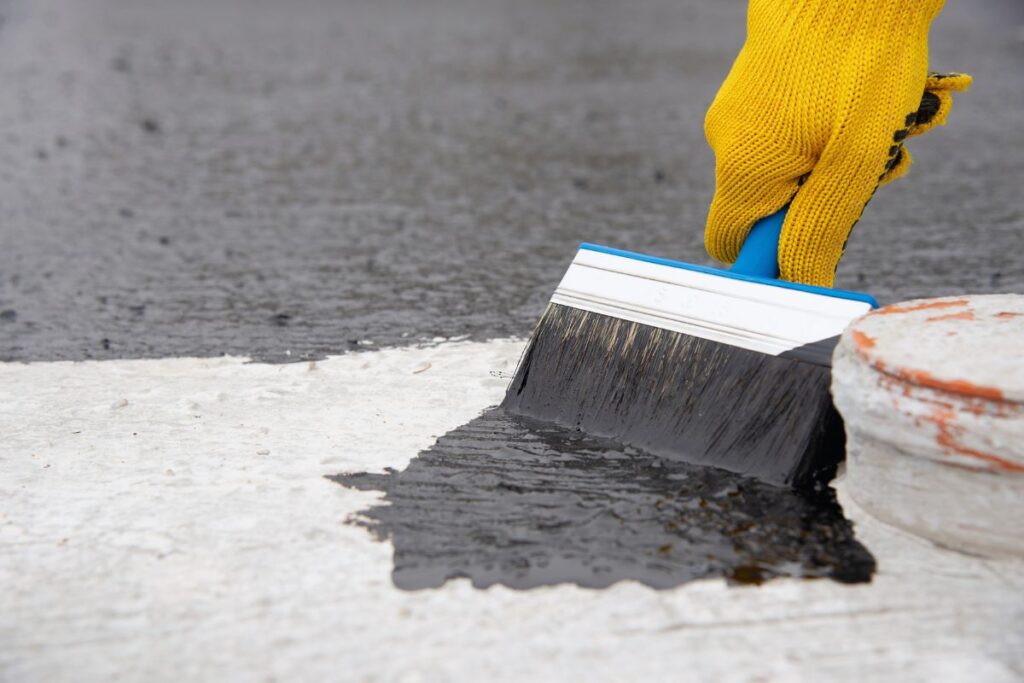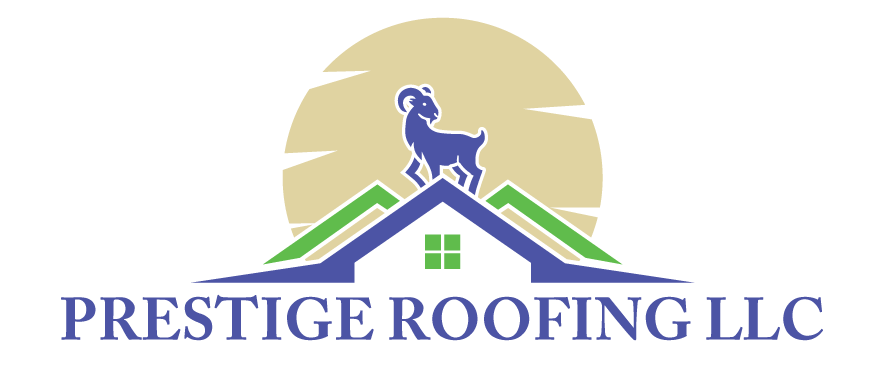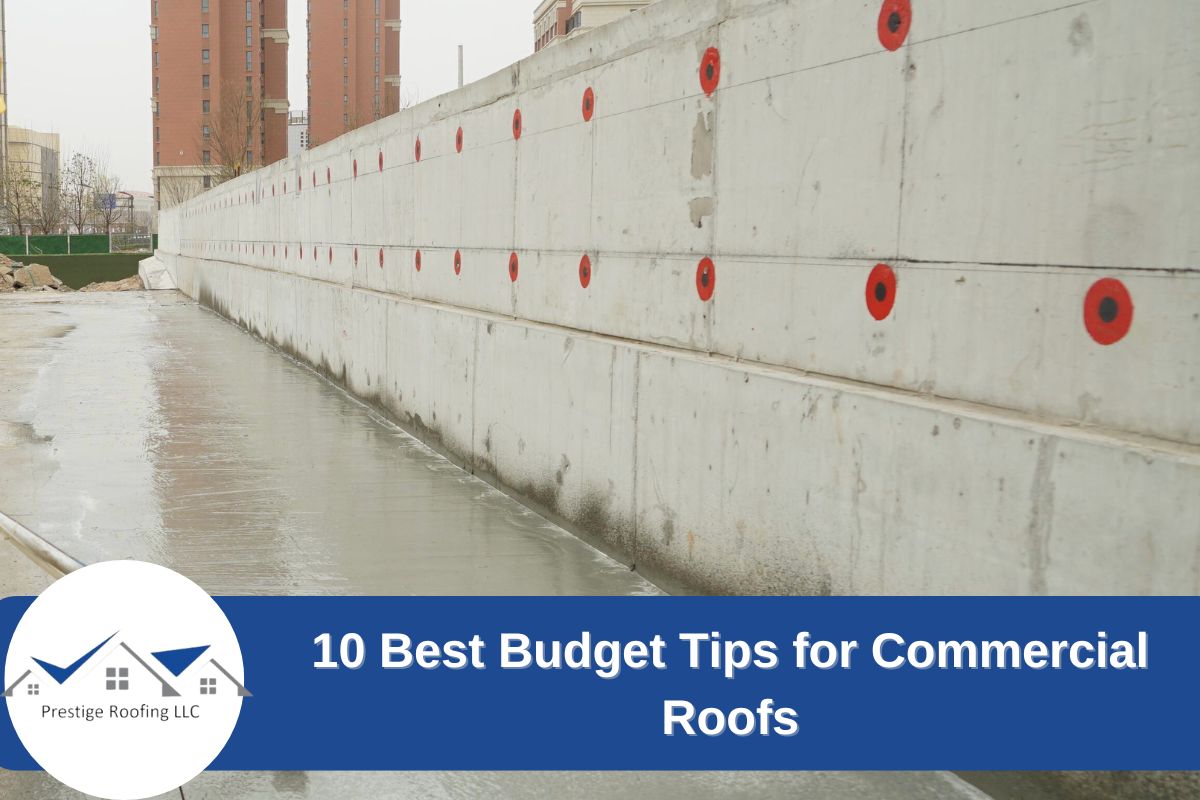A commercial roof is a major investment, and keeping costs under control requires smart planning. Whether you’re installing a new roof or replacing an aging one, balancing quality and budget is critical. The right choices can extend your roof’s lifespan, improve energy efficiency, and prevent expensive repairs down the line. If you’re struggling with budgeting, here’s how to get the most value for your money when planning for a commercial roof installation.
#1 Choose the Right Roofing Material
When it comes to commercial roofing, selecting the right material is more than just about price — it’s about long-term value. Sure, it’s tempting to go with the cheapest option, but that can often lead to headaches later on with frequent repairs and higher maintenance costs. As a roofer, I’ve seen how material choice impacts not just the initial budget, but the overall lifespan of a roof.
TPO: TPO is a highly reflective, energy-efficient material with great tear strength and puncture resistance. The only problem is that it tends to be expensive.
EPDM: A cost-effective rubber roofing option known for durability and ease of maintenance. EPDM lasts long and is moderately priced.
Modified Bitumen: A good choice for flat roofs, offering flexibility and strong resistance to harsh weather.
Metal Roofing: While more expensive upfront, metal roofs last longer and require less maintenance, making them cost-efficient over time, especially if you have a commercial building with a steep slope roof.
Location Matters
The thing is, different climates and environmental factors end up playing a big role in your decision. For example, if you’re in an area with mild weather and low maintenance needs, materials like modified bitumen could be the way to go since it’s budget-friendly and gets the job done. But, if you’re dealing with heavy storms, extreme heat, or heavy snow, it’s worth considering something more durable, even if it costs a little more.
The bottom line is that you should think about long-term costs, not just the initial price tag. A cheaper roof might save you a little cash now, but you’ll likely be paying for repairs and replacements down the road. Investing in the right material will help you avoid those surprises and keep your building protected for years to come.
#2 Work With a Reputable Roofing Contractor
When it comes to commercial roofing, one of the best investments you can make is hiring a reputable, experienced roofing contractor. I know hiring a professional might seem like an added cost up front but it’s going to save you money in the long run. DIY roofing might look like a good way to cut costs, but in reality, it often ends up costing more because of mistakes, poor installation, or the need for repairs down the road.
A skilled contractor helps prevent expensive mistakes, ensures proper installation, and offers reliable warranties. When selecting a roofing company:
- Check reviews and testimonials
- Ask for proof of licensing and insurance
- Request references from past commercial projects
- Get multiple quotes to compare pricing and services
Avoid low-cost commercial roofing contractors with limited experience, as they often cut corners, leading to expensive repairs later.
Also Read: 6 Tips For Finding The Best Contractor In Wisconsin
#3 Plan for Long-Term Maintenance
A well-maintained roof lasts longer and prevents expensive emergency repairs. So, when you budget for your new commercial roof, plan ahead and consider maintenance needs, too.
Establish a maintenance plan that includes the following:
- Regular Inspections: Schedule professional inspections at least twice a year to catch minor issues before they escalate.
- Cleaning and Debris Removal: Clogged drains, leaves, and dirt can cause water pooling and damage over time.
- Sealant Checks: Ensure flashing and seams are sealed properly to prevent leaks.
Preventive maintenance saves money in the long run by extending the life of your commercial flat roof and reducing repair costs.
#4 Invest in Energy-Efficient Options
Energy-efficient roofing materials may have a slightly higher price, but they pay off significantly over time by lowering energy bills and reducing strain on HVAC systems. Consider these options:
Cool Roofing/Green Roofing:

Cool roofs feature reflective coatings or white membranes that bounce sunlight away instead of absorbing heat. As a result, interior temperatures stay lower, reducing air conditioning costs in the summer.
If you want to move away from traditional single-ply membranes and want to do something more modern, you can also consider a green roof. A vegetative or ‘living’ roof provides a natural layer of insulation, reducing heat absorption and improving air quality. Although the initial installation cost is higher, these roofs offer long-term benefits.
Insulation Upgrades:
While creating a budget, factor in the insulation costs, too. High-quality insulation beneath your roofing system helps maintain stable indoor temperatures. In winter, it prevents heat loss, and in summer, it keeps interiors cool, decreasing reliance on air conditioning.
Beyond these benefits, tax incentives and rebates may be available for energy-efficient roofing upgrades since many local and federal programs encourage businesses to invest in sustainability.
#5 Consider Roof Coatings for Cost Savings

Instead of a full replacement, a roof coating can extend your current roof’s lifespan at a fraction of the cost. Roof coatings provide:
- Waterproofing and leak prevention
- Enhanced UV protection
- Improved energy efficiency
- Extended lifespan for existing roofing materials
Coatings work best for roofs in decent condition. If your roof has severe damage, a full replacement might be necessary.
#6 Time Your Roof Replacement Wisely
Scheduling a roofing project during the off-season (late fall or early winter) can result in lower labor costs, as contractors may offer discounts when demand is lower. However, it’s important not to delay a replacement if your roof is in poor condition. If your roof is in decent shape and functioning well, you might consider planning your replacement strategically to take advantage of cost savings. By planning ahead, you can secure the best prices on materials and labor without the pressure of needing emergency repairs, but this should only be done when the timing is right for your specific situation.
#7 Understand Warranty and Insurance Coverage
A good roofing warranty can save thousands in repair costs. When reviewing warranties, look for both material and workmanship warranties. Understand coverage terms and conditions. Ensure your warranty remains valid by following maintenance requirements. Additionally, check your property insurance to see if roofing upgrades or damage coverage is included, potentially reducing out-of-pocket expenses.
#8 Budget for Emergency Repairs
Unexpected roof damage can happen, and when it does, the costs can quickly add up.
Set aside a reserve budget specifically for emergency repairs. This will create a financial cushion, and allow you to address urgent issues immediately without disrupting business operations or scrambling for funds. Investing in a contingency fund also helps you avoid making rushed decisions or accepting subpar repair work due to financial constraints. Set aside a reserve budget for emergency repairs to avoid financial strain.
#9 Optimize Drainage Systems

A commercial roof with poor drainage is more prone to leaks, water pooling, and accelerated deterioration. Over time, standing water weakens the roofing material, leading to expensive repairs or premature replacement. Maintaining an effective drainage system is a cost-efficient way to prolong your roof’s lifespan.
Ensure your roof has sufficient slope and properly functioning drains. Clean gutters regularly to prevent blockages that can cause water to accumulate. Consider installing additional drains or scuppers if water pooling is a recurring issue.
#10 Get Multiple Quotes and Negotiate Pricing
Roofing projects vary significantly in price, so it’s essential to compare multiple quotes before making a decision. Different contractors offer different pricing models, services, and warranty terms. By collecting several estimates, you can ensure you’re getting the best value for your budget.
When negotiating, ask about bulk discounts, payment plans, and any potential hidden fees. You can also ask about financing options if you need to spread the cost out over time.
Find A Premier Commercial Roofing Contractor In Wisconsin
Investing in a commercial roof requires careful planning, but making informed decisions can save you thousands over time. By utilizing these budget-friendly strategies, property owners can maximize the value of their investment while keeping expenses manageable.
At Prestige Roofing LLC, we offer the best commercial roofing services in Northeastern Wisconsin. Whether you want help with an industrial warehouse or an office building, we do it all. Contact us today at (920) 791-0414 to learn more about how we can help you.

